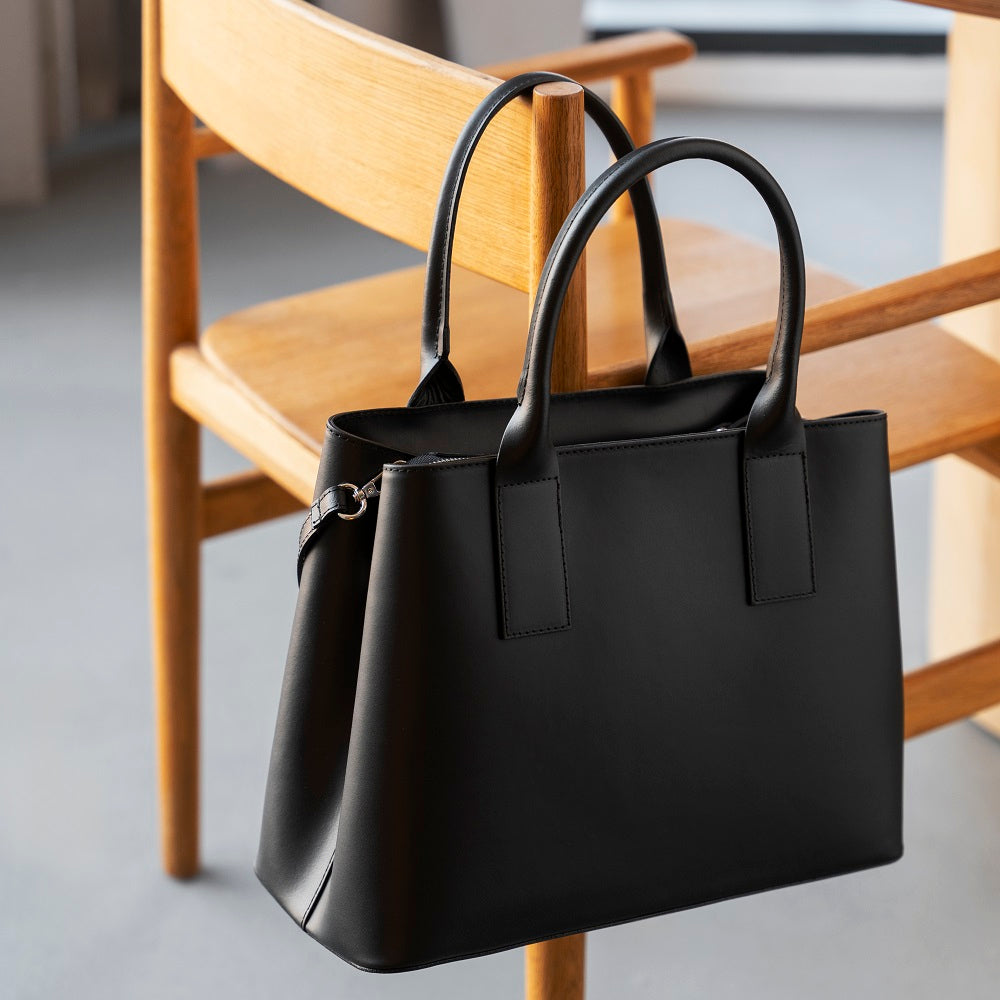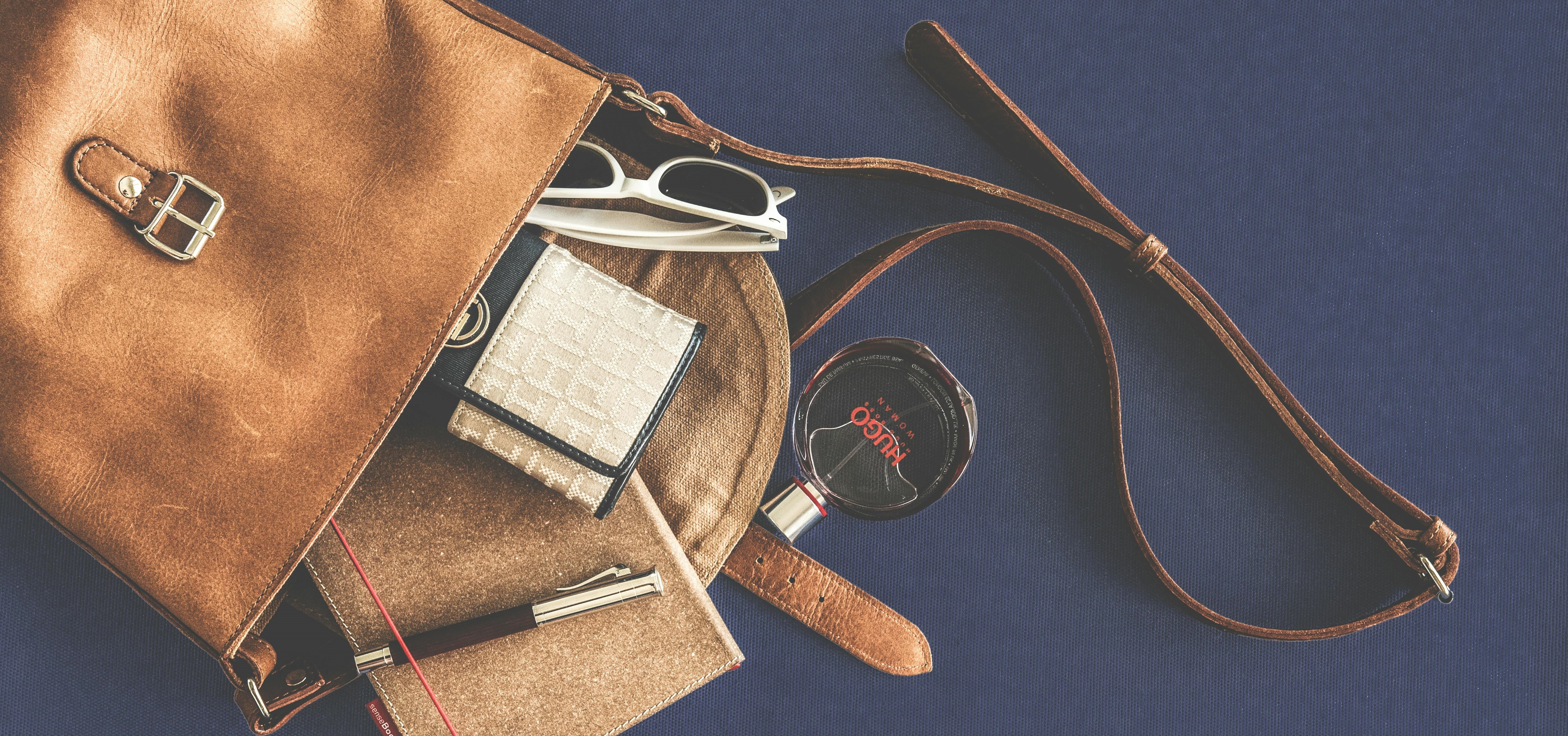Are you curious about the disparity between real and faux leather? Perhaps you've recently acquired a new handbag and are keen to learn the secrets of maintaining its pristine condition. Well, you've landed in the perfect spot! With over two decades of expertise in leather, we're equipped to provide you with all the insights you seek.
Real Leather - What does it represent?
When we talk about 'real' or 'genuine' leather, we're referring to materials crafted from animal skins and hides. These terms serve to distinguish authentic leather from its synthetic counterpart.
However, within the leather industry, 'genuine' is recognized as one of five grades of leather quality. To grasp the nuances of this grading system, it's essential to understand the natural layers present in animal pelts. These layers may be split or left intact, yielding different textures and qualities in the resulting leather.

Let's break down the grades:
-
Full-grain: Considered the cream of the crop, full-grain leather remains unsplit, retaining its natural layers. This results in a thick, durable material imbued with unique characteristics such as distinct coloring and individual creases inherent to each animal hide.
-
Top-grain: Similar to full-grain, top-grain leather remains unsplit but undergoes sanding or buffing to remove natural textures, resulting in a smoother appearance and feel. This yields a slightly thinner leather that's easier to manipulate into various leather goods.
-
Split-grain: As the name suggests, split-grain leather involves splitting the material, creating a soft, flexible suede. Lacking the protective top layer, this type of leather requires extra care to shield it from moisture and other environmental elements.
-
Genuine: While 'genuine' denotes any real leather crafted from animal hides, within the industry, it typically refers to a lower quality leather derived from the bottom layer of the animal pelt. This type of leather tends to be thin and lacks the durability of higher-grade options.
-
Bonded: Created by bonding a mixture of faux and genuine leather shavings from other grades, bonded leather is of notably lower quality. Unlike higher-grade leathers crafted from a single piece of animal skin, bonded leather frequently exhibits cracking or peeling with use. While it may be a budget-friendly option, items made from bonded leather often have a shorter lifespan.
Understanding Faux Leather
Faux leather, an alternative to genuine leather, is a material crafted from an artificial PVC or polyurethane plastic base (PU).
One of the main reasons for the popularity of PU leather is its affordability compared to real leather. This translates to lower production costs and, consequently, more budget-friendly prices for consumers. Additionally, it serves as a cruelty-free option for vegans, as it does not involve the use of animal skins or hides.
You may come across faux leather marketed as 'sustainable', but this claim isn't always accurate. Despite its synthetic nature, faux leather takes considerably longer to biodegrade and emits harmful chemicals, making it environmentally unfriendly. Thus, it is often considered detrimental to the environment.

How Long does Faux Leather Last?
The durability of faux leather varies depending on the quality of the material and the level of maintenance it receives. Typically, high-quality faux leather can endure for 2 to 5 years when properly cared for. Regular cleaning, avoidance of harsh chemicals, and protection from direct sunlight are essential practices to prolong its lifespan.
Making Informed Choices for Sustainable Consumption
When you're in the market for a new accessory—whether it's a genuine leather handbag, wallet, purse, or even a leather jacket—it's crucial to distinguish between real and faux leather. Consider factors such as your budget and the longevity you desire for your new purchase.
At 3y3bags, we advocate for investing a bit more in the genuine option. Opting for genuine leather ensures you're acquiring a highly durable material that will stand the test of time. This means your accessory will endure longer, sparing you the need for frequent replacements and ultimately saving you money in the long run.
How to Recognize Genuine Leather Products
Distinguishing between a genuine leather handbag and one crafted from faux materials can sometimes pose a challenge (unless you're part of our Design Team—our experts have a knack for spotting fakes).
Here are some tips to help you identify authentic leather accessories:
-
The Smell: Real leather emits a distinct earthy, woody scent, unlike the artificial odor of plastic or chemicals associated with faux alternatives.
-
Surface Discrepancies: Authentic leather showcases natural irregularities, akin to fingerprints, as each animal hide is unique. These variations in patterns and marks serve as indicators of authenticity, unlike faux leather, which features a consistent pattern created by machines.
-
Texture: Genuine leather tends to feel soft and supple to the touch, whereas artificial alternatives often feel stiff.
-
The Water Test: Due to its natural properties, leather quickly absorbs liquid. Sprinkling a few drops of water on the surface of a product can help determine its authenticity. Genuine leather will readily absorb moisture, whereas synthetic materials, being plastic-based, will not.
-
Leather Patina: Over time, genuine leather develops a coveted patina—a unique, characterful effect resulting from exposure to sunlight, dirt, and environmental elements. This aging process enhances the leather's appearance, a feature prized by enthusiasts of vintage leather goods. Faux leathers, being artificial, do not develop a patina as they lack the natural properties necessary for this transformation.
While these tips provide a clear guideline for distinguishing between real and low-quality faux leather, it's important to note that manufacturing techniques are continually advancing. This progress can make it increasingly challenging to differentiate between the two materials.
How to Maintain Your Genuine Leather Handbags
If you've invested in a stunning handbag, it's essential to care for it properly. Not only does regular maintenance keep it looking clean and fresh, but it also extends its lifespan.
Ideally, a leather bag used frequently should be cleaned every six months. While professional cleaning services are available, they can be costly and require you to part ways with your beloved accessory for a few days.
Fortunately, you can easily clean a leather handbag at home.
For light stains and dirt, dish soap is effective. Simply dip a clean cloth into soapy water and gently wipe the surface. This offers a quick and straightforward solution for refreshing your bag. Alternatively, you can use 'saddle soap,' specially formulated for leather cleaning. However, if you don't have any, ordinary dish soap will suffice.
For tougher stains or to maintain the leather's condition, consider investing in specialized care products.
Leather Care Essentials
When it comes to caring for your leather items, there's a range of products available, each serving the common goal of safeguarding your cherished possessions. At Radley London, we understand your passion for handbags (because we share it too). That's why we've developed our own line of leather care products, meticulously crafted for use with Radley London styles.
-
Leather Wipes: Our Leather Protection Cloth offers a convenient solution for preserving your accessory. Specifically formulated for Radley London leathers, these wipes create an invisible shield, minimizing the impact of daily grime. Ideal for new bags or as a follow-up treatment after cleaning with our leather cleaner.
-
Leather Cleaner: Designed to tackle water-based stains and dirt, our Leather Cleaner ensures your handbags stay fresh and pristine. Simply apply it to a clean cloth, gently rub in circular motions over the stain, and wipe away. For added protection, follow up with our Protection Cloth after cleaning.
-
Leather Cream: Formulated to condition and moisturize leather, leather creams can enhance the longevity of your items. While not essential for basic leather care, they offer an additional layer of protection for your cherished accessories.
Proper Storage Tips for Leather Handbags
Since leather is a natural material, it requires specific storage conditions to maintain its quality.
-
Allow for Air Circulation: As a skin, leather needs to breathe, so avoid sealing it in an airtight container. Opt for breathable storage options like cotton dust bags or open shelves.
-
Protect from Moisture: Leather is susceptible to damage from moisture, which can lead to mildew or mold growth. Store your handbags in a dry environment and consider using silica gel packs or moisture-absorbing products to ward off dampness.
-
Shield from Sunlight: Direct sunlight exposure can cause leather to fade or discolor over time. Store your handbags away from windows or sources of intense sunlight to preserve their original appearance.
-
Preserve Shape: Leather handbags are prone to losing their shape if stored improperly. To prevent this, fill the bags with tissue paper or bubble wrap to help them maintain their shape while in storage.
In summary, store your leather handbags in a cool, dark, and dry location to ensure their longevity and maintain their pristine condition.



